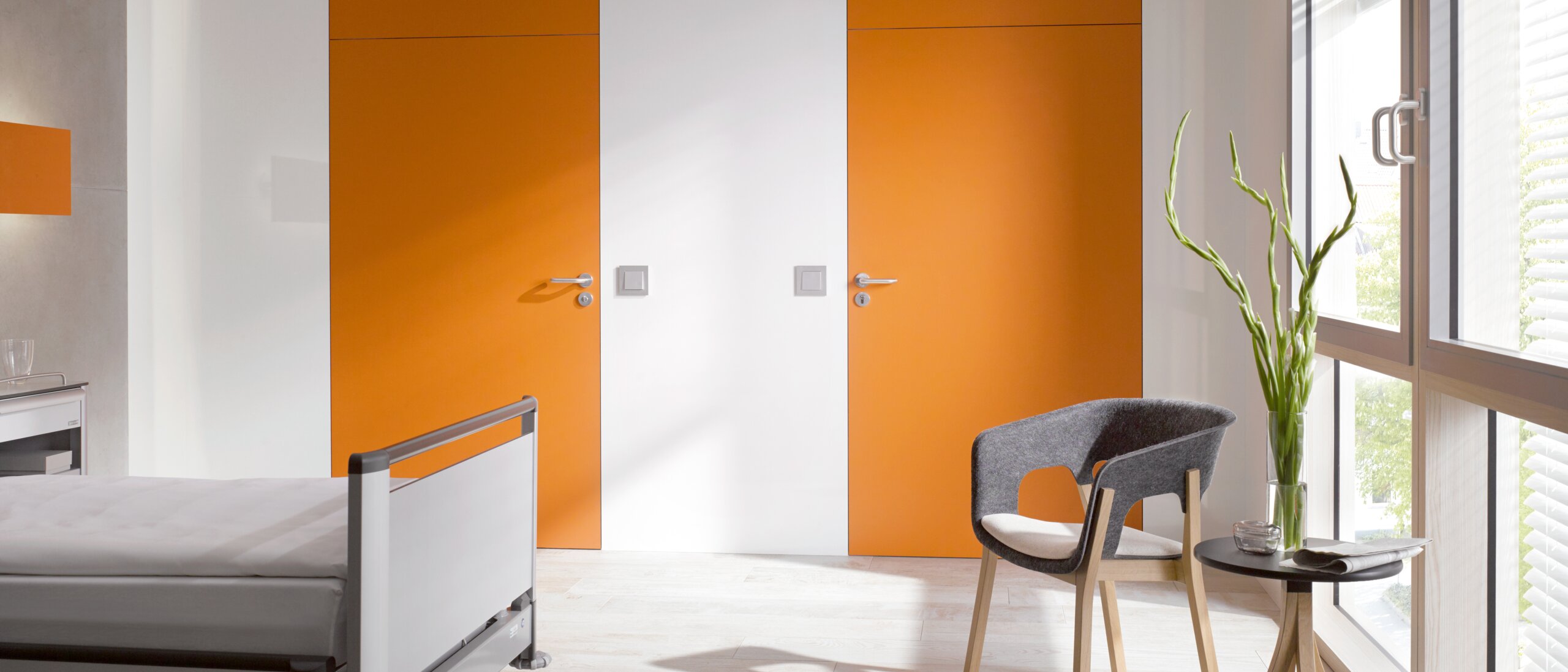HEWI MAG / Clinic
Healing architecture in hospitals: New paths to healing and comfort
The design of hospitals has changed in recent years. At the centre of this development is the concept of healing architecture, which aims to create an environment conducive to healing by means of well thought-through hospital architecture. This innovative concept goes beyond traditional approaches and integrates elements that promote both the physical and psychological well-being of patients.
In this article, we look at modern approaches to healing architecture and show how they are being implemented in hospital design in order to open up new paths to healing and comfort.
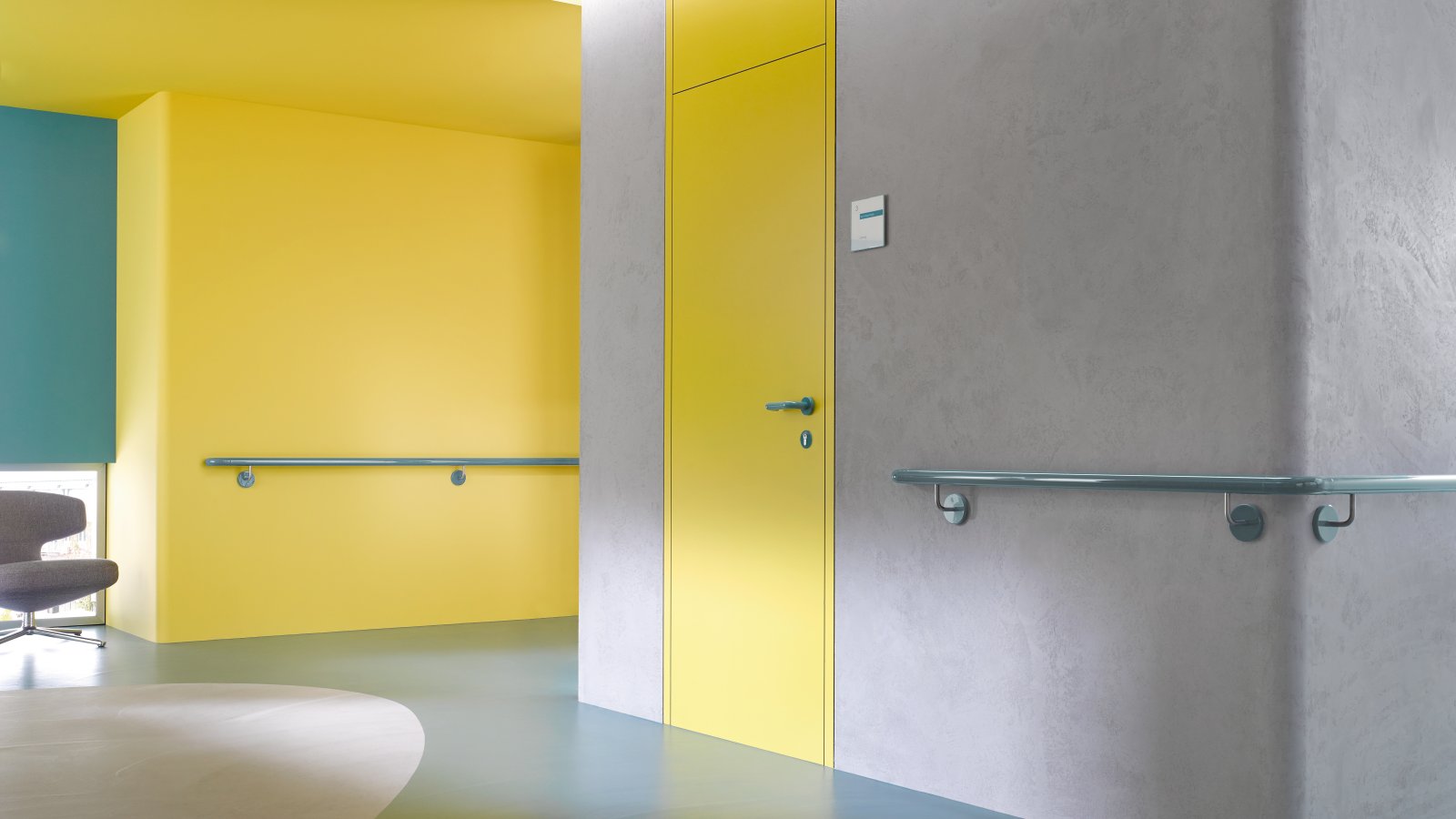
Current trends in healing architecture
Modern hospital architecture has developed considerably and now places greater emphasis on the well-being of patients and care staff. Healing architecture aims to create a holistic environment that promotes healing, and current developments in hospital design include the following:
Patient-orientated rooms
The design of rooms and communal areas is increasingly focussed on patients in the spirit of healing architecture. This means that rooms are designed to maximise patient comfort and privacy. Natural light sources, calming colour schemes, and comfortable furniture are essential elements that promote well-being.
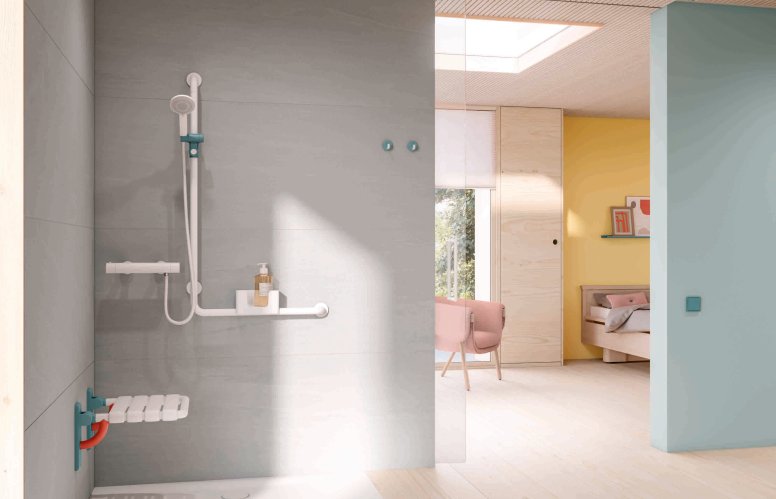
Flexible room concepts
Hospitals are increasingly focussing on flexible room concepts that can be easily adapted to changing needs. Modular furniture systems and mobile partition walls allow rooms to be adapted quickly. This is particularly advantageous in emergency situations or when occupancy rates change.
The mobile solutions from HEWI allow you to design hospitals flexibly. Thanks to these product designs, patient bathrooms can be customised to suit their individual needs. The mobile hinged support rails, shower stools, back rests and other support rails offer secure hold and increased comfort when required. They can be attached and removed quickly and easily.
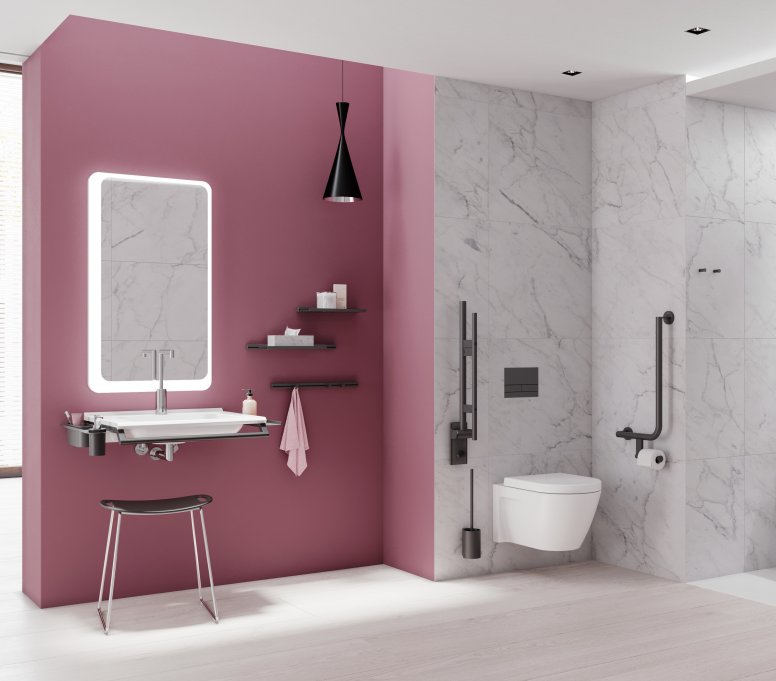
Nature and green spaces
Another aspect of healing architecture is the integration of nature and green spaces into the hospital design. Inner courtyards, roof gardens, and green interior spaces create a calming atmosphere and promote the health of patients and staff. Access to green areas has been proven to reduce stress and speed up recovery.
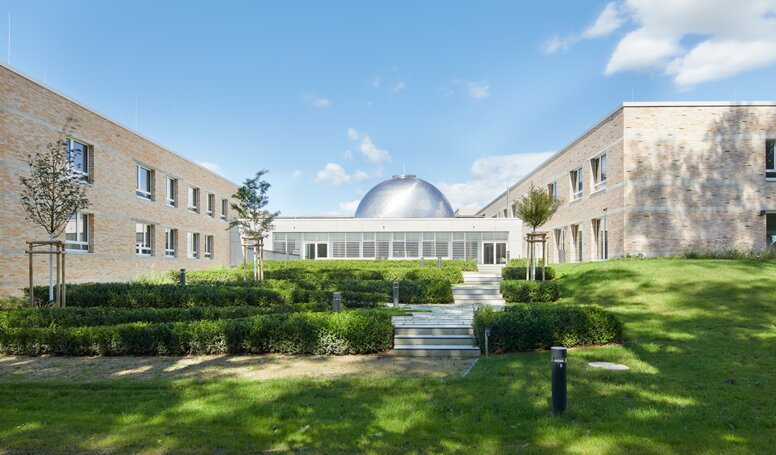
Focus on recovery and stress reduction
Modern hospital design takes both patients and care staff into account. Well-designed break rooms and relaxation areas are crucial for the mental recovery and stress management of hospital staff. These rooms should be designed to be comfortable with cosy seating, quiet corners, and natural elements such as plants and natural light. Relaxation areas offer staff the opportunity to briefly recover from the demands of everyday working life. This increases stress resistance and promotes general health. A well thought-through design of these areas is essential to ensuring a healthy and productive working environment in the hospital.

Materials and layouts in healing architecture
Choosing the right materials and layouts plays a crucial role in hospital architecture, especially when it comes to infection control and patient comfort. In the context of healing architecture in hospitals, a well thought-through choice of materials and intelligent interior design are key factors that can greatly improve the well-being of patients and the efficiency of hospital staff.
Antimicrobial materials
One way to reduce infections is to use antimicrobial materials. Surfaces such as copper alloys, special plastics, and coatings with antimicrobial properties can greatly reduce the spread of germs. These materials are often used in areas with a high risk of infection (e.g. patient rooms, operating theatres, and sanitary areas).
With the antimicrobial HEWI products in the active+ version, planners can actively contribute to reducing the risk of infection in hospitals.

Easy-to-clean surfaces
Materials that are easy to clean and disinfect also help control infections. Smooth, non-porous surfaces made of glass, stainless steel, or special plastics prevent the accumulation of dirt and bacteria and make cleaning easier. This is particularly important in high-traffic areas such as corridors, reception areas, and waiting rooms.
The accessible products of the HEWI System 900 are characterised by particularly easy cleaning as well as a robust and hygienic surface. Thanks to different surfaces and colours, the product range offers design variety for architects – leaving nothing to be desired for you or your patients.
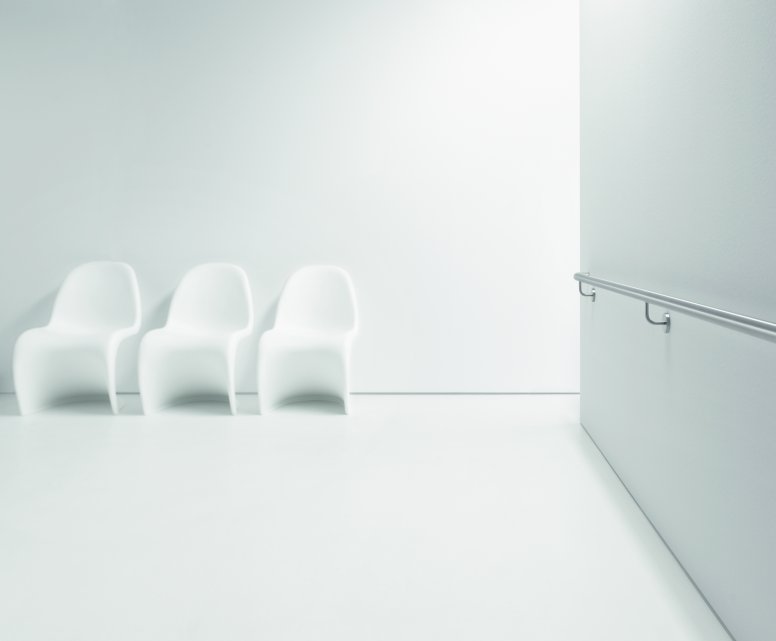
Strategic room layouts
Optimising the layout of rooms in modern hospital design can also help control infection. Separate routes for patients and staff, special isolation areas, and a clear separation of clean and contaminated areas help to minimise the spread of infection and promote healing architecture. In addition, well thought-through layouts enable more efficient use of the space and make it easier to comply with hygiene standards

Comfort-enhancing materials
In addition to infection control, patient comfort plays a central role in healing architecture for hospitals. Materials that are pleasant to the touch, soft textiles, and warm colours create an inviting and calming atmosphere. These elements can reduce stress and promote a positive environment that supports healing.
With the supportive products of the WARM TOUCH design, planners can offer maximum comfort. WARM TOUCH combines the optical properties of high-gloss chrome surfaces with the haptic properties of polyamide and thus offers an alternative to conventional, cold chrome products. For patients with increased sensitivity to cold or older people in particular, the warm alternatives are more comfortable to grip and are an ideal solution in terms of healing architecture.
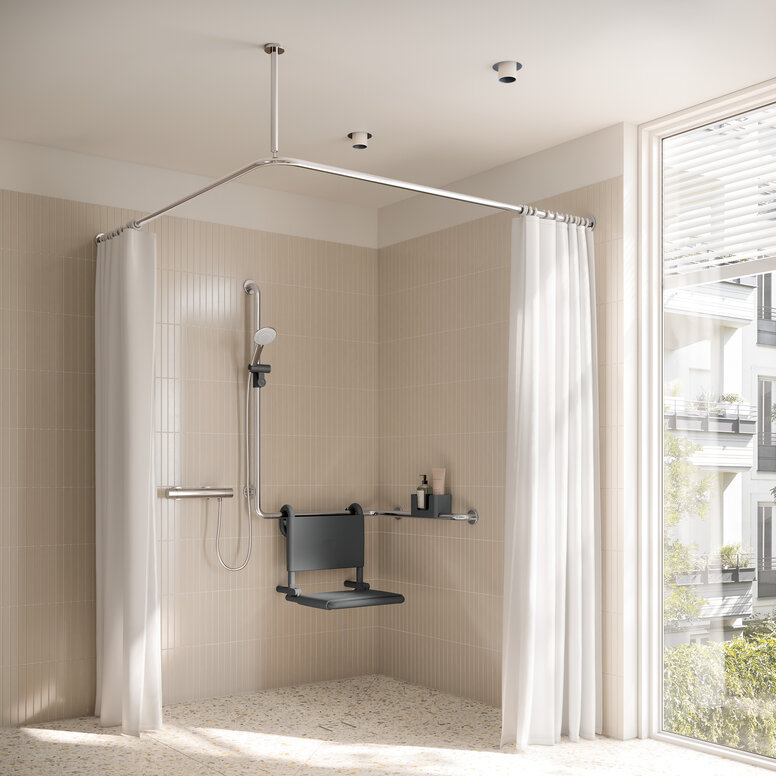
Acoustic materials
Acoustics are also an important factor of healing architecture to promote comfort in hospitals. Sound-absorbing materials and special acoustic ceilings help to reduce noise levels and create a calmer environment. This improves not only the comfort and recovery process for patients but also the working conditions for staff.
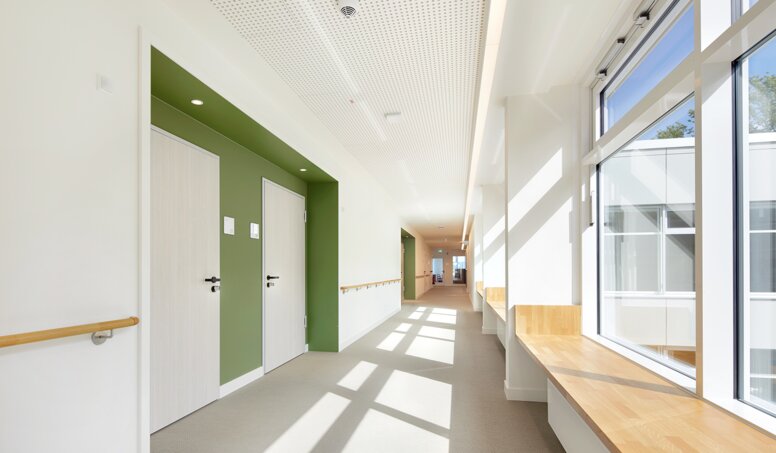
The right sanitary fittings in the spirit of healing architecture
The fittings of the patient bathrooms is a decisive aspect of healing architecture. These should not only be accessible and safe but also create a calming and healing atmosphere. Ergonomically designed elements play an important role in increasing patient comfort. And hygienic and are easy-to-clean materials help control infections and increase well-being. Sophisticated lighting and a pleasant colour scheme also promote relaxation and support healing. A well-designed patient bathroom must fulfil the diverse needs of patients. Products such as support rails, hinged support rails, and seating options offer additional comfort and safety for everyone. These elements not only make everyday hospital life easier for patients but also promote their independence and can relieve the burden on the care staff.
The aspects of healing architecture have been incorporated into the development of the ICONIC version of the HEWI Range 477/801. With the colour edition coral, aqua blue, and pure white, this range offers the opportunity to create healing and calming environments in healthcare facilities. The carefully selected colours help to promote well-being and support recovery by creating a relaxing and revitalising atmosphere.
Future perspectives for healing architecture in hospitals
The future of healing architecture in hospital design promises exciting developments that go far beyond previous approaches. Colour design, choice of materials, and room layout are increasingly optimised for their health-promoting properties. The integration of natural elements such as daylight, green spaces, and calming colour schemes plays a decisive role here. The aim is to create an environment that is both functional and aesthetically pleasing and actively contributes to the recovery and well-being of patients.
Do you need support in planning your project?
With the planning service of HEWI, you can choose just the right sanitary fittings for your project. You can rely on solutions that are precisely tailored to your requirements and the needs of patients.
HEWI is your reliable partner for successful project planning. Take advantage of our experience and expertise in order to turn your visions into reality. Fill in the form below, and contact the HEWI planning service.
